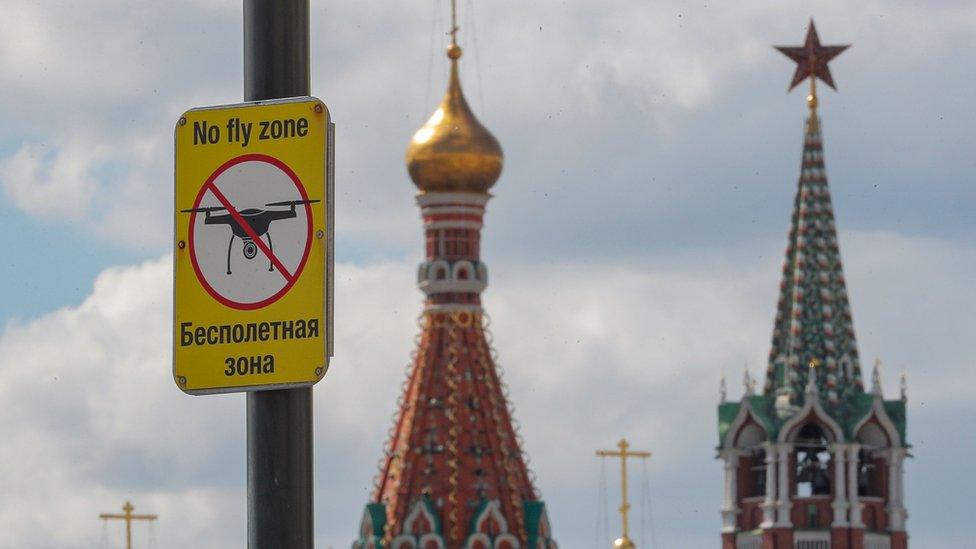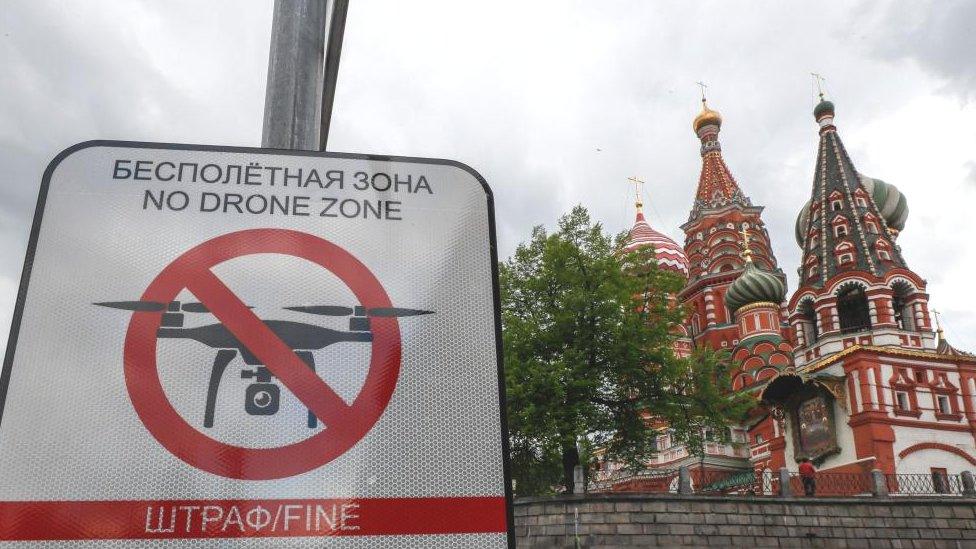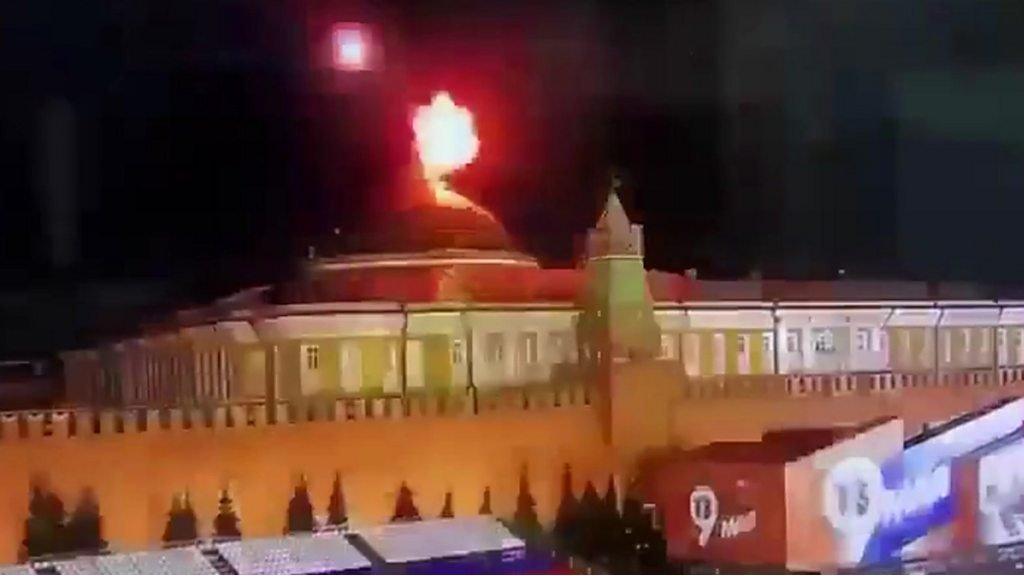Who was behind the Kremlin drone attack?
- Published

The Kremlin's airspace is supposed to be under heavy guard
By now, most of you will have seen the dramatic images that came out of Russia this week.
An object can be seen flying towards the dome of the Kremlin Senate building. There is an explosion. Black smoke billows from the scene.
Cue another explosion: of rumours and speculation about what happened.
A drone attack? Apparently. But by whom? Ukraine? Russian partisans? Or was it an inside job? A false flag operation?
Cards on the table: I don't know. Much remains unclear about what happened but here are my thoughts:
The official version of events - the Kremlin version - is that this was a Ukrainian drone attack (two drones, in fact) targeting President Vladimir Putin himself.
An attempt to assassinate the Russian president? Seems unlikely. President Putin does have a private apartment in the Kremlin but his main residence is 32km (20 miles) away.
Even Russian state TV appeared to cast doubt on that version on Wednesday evening. One analyst on Channel 1's Vremya evening news bulletin observed: "The kind of explosive charge carried by drones like these cannot do widespread damage. This attack was clearly just for show."
Ukraine has denied trying to assassinate President Putin.
"We don't attack Putin or Moscow," said President Volodymr Zelensky this week. "We fight on our territory. We're defending our villages and cities. We don't have enough weapons for this."
WATCH: Russian video circulates after Kremlin attack claims
But suppose this was, indeed, an operation conceived and carried out by Ukraine, or by a group in Russia sympathetic to Kyiv? Even if this was "just for show"?
That would be hugely embarrassing for the Kremlin. Just imagine: the seat of Russian power, one of the most heavily guarded complexes in the world, penetrated by a couple of drones packed with explosives - despite all the air defence systems protecting Moscow and the jamming systems the Kremlin surely has to keep dangerous drones at a distance and to prevent such attacks.
Improbable, impossible even? Well, think back to 1987 when West German teenager Mathias Rust evaded Soviet air defences and landed his Cessna plane on Red Square. History shows that nothing is impossible.

Mathias Rust was just 19 when he flew single-handed more than 500 miles (750km) and landed outside the Kremlin
It was telling how the main evening news bulletins on Russian TV channels reported this week's incident. It was the top story. But neither of the bulletins I watched, Vremya on Channel 1 and Vesti on Russia-1, broadcast those dramatics videos of explosions and smoke.
Instead, they used library footage of the Kremlin and Red Square. Perhaps because the image of a defenceless Kremlin under attack was too uncomfortable to share. Russian newspapers covered the story the following day, however, not in great detail.
But back to rumours and speculation. Social media is awash with cries of "fake!" and "false flag!"
Some commentators suspect it was staged by the Russian authorities or by elements of the security services to provide a pretext for escalating the war in Ukraine.
And yet, ever since the Kremlin launched its full-scale invasion of Ukraine in February 2022, it has shown it is ready to escalate the conflict without a need for any pretext. Why would it stage-manage such a potentially embarrassing incident that many will interpret as a sign of the Kremlin's weakness? And think back to those TV news bulletins: they avoided showing images of the explosions.
There are other theories. Could what happened be the result of infighting in the corridors of power here, between different groups vying for influence over the Kremlin?
As I said in my disclaimer, I do not have the definitive answer. Just lots of questions.
Watch: An inside look at life in Russia 14 months after invasion of Ukraine
Related topics
- Published3 May 2023

- Published3 May 2023

- Published3 May 2023
